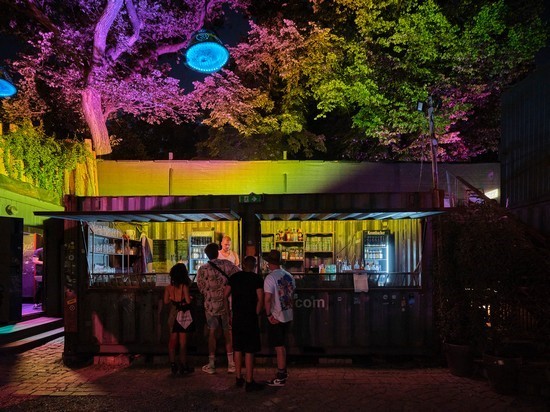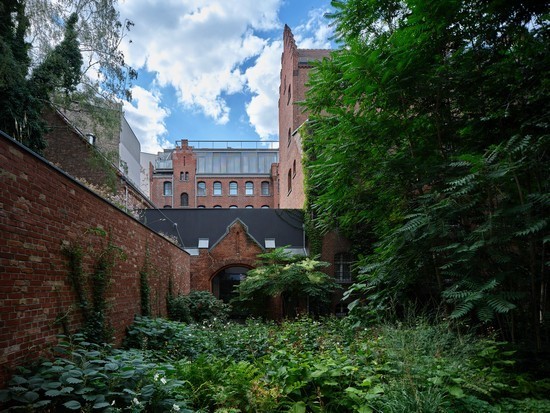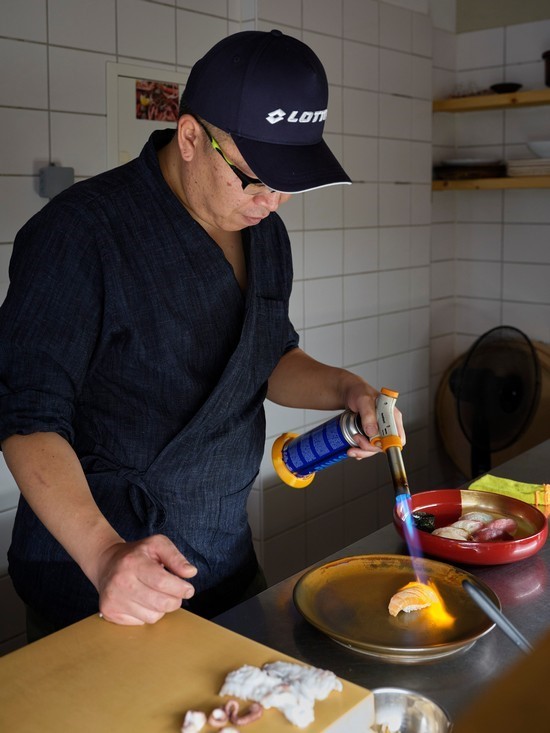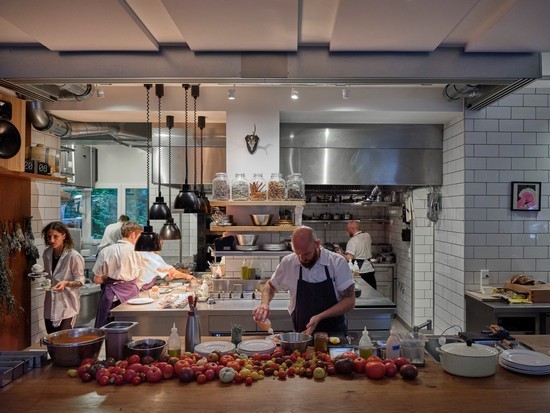No city
was fun in the darkest days of the pandemic, but there may be nowhere that
could compete with
Berlin for sheer gloom during that first COVID winter. Even
in good times, the city’s funereal grayness, its scant daylight and collective
penchant for gallows humor and blunt negativity, known as the Berliner Schnauze
(literally: Berlin snout), is only barely compensated for in the colder months
by its abundant cultural offerings, thriving cafe and restaurant scene, and
what is arguably the best nightlife in the world. Berlin in lockdown was not
pretty.
اضافة اعلان
But this summer,
the city is back in full swing. Berlin’s 178 museums, seven symphony orchestras,
and three opera houses are once again up and running. Bars, clubs, and
restaurants are operating at full capacity, and, with the exception of a mask
mandate on public transportation and in medical facilities, virtually all
COVID restrictions have been lifted since March 20. Germany’s entry restrictions were
also dropped — at least until the fall, when there has been talk of renewed
requirements if case numbers creep upward.
A few fraught openings and an extraordinary museum
Perhaps the biggest opening in town was the new airport,
Berlin-Brandenburg Willy Brandt Airport, a blunder-riddled, 30-year project
that opened at the end of 2020 after at least six missed opening dates and a
budget that ran billions of dollars in the red. And now that it’s finally here?
Of course, everyone seems to hate it. The design is outdated. Logistics are
dismal, food options grim. Clunky buses run between plane and terminal. At
least there seem to be more trans-Atlantic flight options and the airport is
somewhat better connected with the city center. But overall? Not a huge win.

Another fraught,
long-awaited opening was that of the Humboldt Forum, the neo-Baroque
reconstruction of Berlin’s long-dead City Palace conceived as Germany’s answer
to the Louvre or British Museum. The museum, which opened virtually at the end
of 2020 and began its phased physical opening in 2021, has elicited criticism
from the beginning for everything from its tacky design to its insufficiently
investigated links to the country’s colonial past. Still, there are worthwhile
exhibits to explore. In addition to covering the site’s history and
contemporary topics such as climate change, exhibits include the German state’s
extensive collection of non-European art, including impressive holdings from
the
Ethnological Museum and the Museum of Asian Art, much of which was acquired
through imperialist plunder.
Visitors may be
better advised to check out the extraordinary Neue Nationalgalerie, the iconic
modern art museum designed by Bauhaus pioneer Ludwig Mies van der Rohe that
reopened last summer after a six-year, $164 million refurbishment by David
Chipperfield. Dedicated to art of the 20th century, the museum is particularly
strong on early German modernism, from the expressionist Berlin street scenes
of Ernst Ludwig Kirchner to Hannah Höch’s political photomontage and the
glitter and doom of new objectivity portraiture masters Otto Dix, George Grosz,
and Max Beckmann. Current exhibitions include works by Sascha Wiederhold, whose
graphic, psychedelic abstractions were suppressed by the Nazis, almost into
obscurity.
A flourishing food
scene
While the pandemic was inarguably rough on local businesses, particularly
as rents in the city continued to spike, extensive government support helped
stave off much of the damage — part of Germany’s 130-billion-euro ($155
billion) stimulus package.
COVID certainly didn’t stop the ascent of the city’s
food scene, which is flourishing like never before as new restaurants and
pop-ups by innovative chefs make it increasingly hard to remember that only a
decade ago, it was legitimately hard to find a great meal in Berlin.

Much of the recent
action is concentrated in Prenzlauer Berg, the former East Berlin workers’
district turned bougey family enclave. Opened in July 2021 by Samina Raza and
Ben Zviel, the duo behind the Berlin stalwart Robinson’s, Frieda is an all-day
restaurant that takes a similarly locavore, nose-to-tail approach to accessible
fine dining, with a daily changing menu featuring faultless dishes like
line-caught tuna “chateaubriand” in a black pepper reduction with triple-cooked
fries, or heirloom tomatoes from a regenerative farm in Brandenburg served with
AAA Cantabrian anchovies drizzled in olive oil. Above all, Frieda is vibey,
with its cinematic open kitchen, on-tap natural wines and custom hi-fi sound
system pumping vintage house and jazz vinyl (dinner for two with drinks, from
140 euros, or about $144).
In Mitte, the
Dutch team behind Lode & Stijn opened another European fine dining spot in
the building of the Suhrkamp Verlag publishing house called Remi (dinner for
two with drinks from 160 euros). More exciting is San, which serves what must
be the best sushi in Berlin in a low-key minimalist dining room on a quiet
Mitte side street (dinner for two from 100 euros; a 50-euro prepayment is
required per person to reserve). Other notable additions include ChungKing
Noodles, a cultish Sichuan noodle joint opened in Kreuzberg by Chinese chef Ash
Lee after a series of celebrated pop-ups (dinner for two from 45 euros); La
Côte, a Mediterranean bistro in Neukölln’s Schillerkiez known for its oysters
and wine list (dishes range from 3.50-euro oysters to a 28-euro octopus dish);
and Julius, a slightly dressed-down sister restaurant of the Michelin-starred
fine dining establishment Ernst, just down the block in Wedding. Julius offers
similarly Japanese-inflected, meticulously sourced cuisine, but at a slightly
lower price point and level of accessibility (75 euros per person without wine
pairing).
New and coming hotels
The city’s hotel scene has not been nearly as fertile as its gastronomic
counterpart. The hotel group Amano opened a new location in Friedrichshain
(doubles in August start at 121 euros), and the architectural team behind the
Former Jewish Girls School project in Mitte opened a boutique hotel called
Wilmina in the Charlottenburg district that might have been appealing were it
not housed in a former Nazi prison where women dissidents were jailed and
interrogated by the Gestapo.

But anticipation is
high for two hotels by local culinary institutions opening later this year in
Mitte: Chateau Royale, a 93-room interpretation of the classic grand hotel by
the team behind Grill Royale (doubles in September start at 195 euros), and
Telegraphenamt, a hotel and members club by the owners of the 150-year-old
Gendamenmarkt dining establishment, Borchardt (rooms from 200 euros).
Night life returns
Then there is the club scene, perhaps Berlin’s biggest tourism draw. Even
before COVID, concern that rising rents and rampant property development were
threatening the city’s landscape of clubs. These worries heightened as the
pandemic forced all of the city’s clubs to close, remaining shuttered even when
shops, museums, and galleries began to open with restrictions.
Some clubs were
repurposed as COVID testing centers or vaccination hubs. Berghain, the techno
temple itself, reopened as an art exhibition that saw the former power plant
filled with works by local artists from the private Boros Collection.
In the end, not a
single Berlin club closed for good because of the pandemic, thanks in large
part to government grants and advocacy by the Berlin Club Commission, a trade
organization. Newer venues, like open-air clubs Oxi Garten and Æeden, and
especially the culturally adventurous Trauma Bar und Kino, are breathing fresh
energy (and much-needed diversity) into the city’s nightlife.

And the forest
raves that spread through the Brandenburg countryside during that first
locked-down summer? They seem to be one COVID-era development with staying
power. There’s no telling what the fall might bring, but at least in the summer
of 2022, there’s more dancing in Berlin than ever before.
Read more Travel
Jordan News



